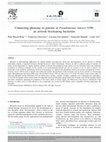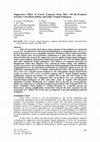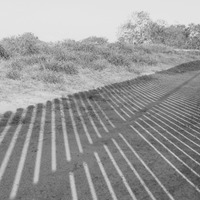Papers by Giancarlo Ranalli

This chapter will focus on the role of microorganisms in the removal of nitrates and sulfates on ... more This chapter will focus on the role of microorganisms in the removal of nitrates and sulfates on artistic stoneworks. The main groups of microbes and their metabolisms involved in bioremoval methods for the preservation and protection of cultural artifacts are reported. The aim is to offer a comprehensive view on the role and potentiality of virtuous microorganisms in the biocleaning and bioremoval of black crusts and salts altering CH stoneworks. We highlight the importance of the use of the selected microorganisms and the adoption of adequate carriers for the anaerobic metabolism of nitrate and sulfate reducers to be applied on the altered stone surfaces. The following characteristics of the delivery system are of great importance: the ability to guarantee water content for microbes, the absence of toxicity for the environment, no negative effects to the stone surfaces, easy to prepare, to apply, and to remove from different stone surfaces at the end of the treatment. We report an...

This chapter will focus on the potential role of safe microorganisms as biocleaning agents in the... more This chapter will focus on the potential role of safe microorganisms as biocleaning agents in the removal of altered or undesirable organic substances on historical wall paintings. Selected microbes can be adopted as biological cleaners to reduce and remove deterioration ageing phenomena, environmental pollutants and altered by-products of past intervention of restorations. The aim is to offer a comprehensive view on the role and potentiality of virtuous microorganisms pro- biocleaning of altered historical wall paintings. We also report four case studies in the CH restoration field, carried out in the last 25 years, with the innovative use of bacteria and different delivery systems, focusing the attention on the preliminary diagnosis and the monitoring of the whole process. The CH field represents a great challenge and Science and Art link together the work of conservator scientists and historians with researchers and scientists, sharing their diverse expertises and joining the kno...

Research in Microbiology, 2016
Research on biotechnology applications for cultural heritage restoration has shown how microorgan... more Research on biotechnology applications for cultural heritage restoration has shown how microorganisms can be efficient at cleaning particularly complex or ingrained substances through the process called "biocleaning". Bacteria are able to synthesize groups of specific enzymes for the degradation of complex materials present on artwork. Biocleaning has been shown to be less hazardous than some traditional mechanical or chemical techniques for the artwork, to be environmentally-friendly and safe for restorers to use. In order to improve our knowledge of the metabolic mechanisms involved in biocleaning, we analyzed the relationship between the genome and phenome of Pseudomonas stutzeri 5190 in order to identify and confirm the benefits and drawbacks of this bacterium used on on-site artwork as a biocleaning agent. Main phenotype microarray (PM) assays showed that P. stutzeri 5190 was able to use: i) 51 of the 190 carbon sources tested, where 32 were used efficiently, among which there were six amino acids (L-proline, L-alanine, D-alanine, L-glutamic acid, L-asparagine and L-glutamine); ii) 74 of the 95 nitrogen sources tested, where 50 compounds were used efficiently, among which were 28 amino acids and the inorganic nitrate and nitrite compounds, supporting the hypothesis of the strain's ability to remove nitrate salt efflorescence from frescoes. Furthermore, high tolerance to osmotic stress, to basic pH and to toxic compounds was revealed by PM. Putative genes compatible with these phenotypes are described.

V International Symposium on Olive Growing, 2008
After oil extraction from olives, large amounts of by-products are generated every year. If subje... more After oil extraction from olives, large amounts of by-products are generated every year. If subjected to advanced biotechnologies of composting they can be reused in agriculture as eco-compatible amenders, fertilizers and/or natural pesticide. In this regard, olive oil by-products composted in a pilot scale olive plant were characterized and assayed for suppressive activity against fungal plant pathogens. Some cured composts consistently reduced the growth in vitro of Verticillium dahliae and other important fungal pathogens. The efficacy of composts decreased or disappeared when the composts were autoclaved before using. The inhibitory activity seems due to the beneficial residual microbial population selected during the composting process. In experiments performed on young olive plants grown on soil artificially contaminated by V. dahliae microsclerotia (MC), the incorporation of 15% (w/w) of a selected cured compost or the antagonistic fungus Trichoderma viridae as well as 15% (w/w) of cured compost and T. viridae applied together significantly reduced the density of V. dahliae MC in the soil. The results of this investigation indicate that composted olive by-products are very promising to control fungal pathogens of olive and other crops in organic and integrated agriculture systems. Monitoring of V. dahliae MC in the soil by a semi-selective media was compared to a molecular method based on Real-Time Scorpion PCR. The latter technique, which enables V. dahliae detection by a specific increase of fluorescence during amplification, drastically reduced the time required for the assessment of V. dahliae MC in the soil, as compared to the microbiological cultural techniques.

Microbiology of Composting, 2002
ABSTRACT Composting is a process largely used to solve the organic material disposal problem, but... more ABSTRACT Composting is a process largely used to solve the organic material disposal problem, but composting of the olive husks produced by two-phase technology remains largely unknown. Because of their high content of salts, polyphenols, fatty acids and tannins, husk utilisation as fertiliser is not possible. Composting of the husks could permit the reduction of salt content and conversion of phenolic compounds into humic substances, but the knowledge about conditions of starting up, running the plant, degradation and microbiological characteristics of the cured compost has to be improved. Trials were carried out with uninoculated (A), and inoculated (B) piles and the process was monitored by ATP content and a pool of enzyme activities. The results showed that the performance of the process improved from pile A to pile B and ATP and mainly a pool of enzyme activities (alkaline phosphatase, esterase, esterase-lipase, phosphoamidase, β-galactosidase, β-gluco-sidase) showed effectiveness in the description of process. Finally, the molecular methods used to detect faecal contaminants in the cured compost resulted to be reliable.
Biological Wastes, 1990
A BSTRA CT Samples taken from liquid influents, liquid effluents, bottom sediments and biofilms a... more A BSTRA CT Samples taken from liquid influents, liquid effluents, bottom sediments and biofilms attached to the supports of three laboratory anaerobic, fixed-bed, upflow digesters,filled with wood chips, P VC or expanded-clay support media and fed with swine slurry, were tested microbiologically. The numbers of anaerobic heterotrophic, anaerobic cellulolytic, acidogenic-peptone-glucose [ermenting andmethanogenic bacteria were determined. For each digester the biogas production was monitored. The highest biogas production, referred to the volatile solids concentration in the feed, was obtained in the digester with wood chips, while production was almost nil in the digester with expanded clay.

Cultural Heritage and Aerobiology, 2003
The air of indoor and outdoor environments contains a great number of particles in suspension, ha... more The air of indoor and outdoor environments contains a great number of particles in suspension, having various origins, shapes and sizes. These particles form the atmospheric aerosol (Table 5.1). The criterion for classifying the particles may vary, depending on the purpose of the work: they may be classified on the basis of their nature (biological, organic, inorganic), of their location (marine, continental, rural, industrial, urban), and of the effects (chemical, toxic, pathogenic, of degradation) that they produce on their deposition surfaces, which may be either materials or living systems. Among the particles of biological origin, a distinction is generally made between viable ones, which are able to reproduce or stimulate biological processes, and non viable ones or their fragments. The term microorganisms is used in this chapter to indicate viruses, bacteria, algae, protozoa, fungi (yeasts and moulds), spores etc.. Spores may be clusters or single particles originated from fungal fruiting bodies, or resistant forms produced by some bacteria. To these microorganisms we may add the spores of Bryophyta and Pteridophyta, lichen propagules, algal cells, pollen grains and Protozoa cysts. These are often found aggregated or included in other liquid or solid particles.











Uploads
Papers by Giancarlo Ranalli